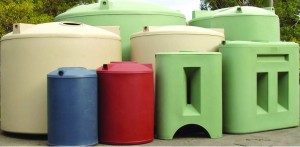Rain Water Tanks Melbourne
Rain Water Tanks
| Litres | Diameter Wall Height |
Total Height |
$RRP |
Our Price |
Delivery |
|
| 250 | 520 | 1550 | 1550 | |||
| 410 | 620 | 1550 | 1620 | |||
| 555 | 720 | 1600 | 1690 | |||
| 760 | 820 | 1660 | 1760 | |||
| 980 | 920 | 1710 | 1850 | |||
| 1260 | 1020 |
1760 | 1920 | |||
| 1635 | 1120 | 1830 | 1990 | |||
| 2000 | 1220 | 1900 | 2060 | |||
Water tanks for homes play a vital role in ensuring a reliable and sustainable water supply, especially in regions facing water scarcity or unreliable municipal water sources. These tanks come in various sizes, materials, and designs, offering homeowners flexibility in choosing a solution that suits their specific needs and available space.
One of the primary purposes of residential water tanks is to harvest rainwater. Rainwater harvesting involves collecting and storing rainwater runoff from roofs and other surfaces for later use. This eco-friendly practice not only conserves water resources but also provides an alternative water source for activities such as gardening, flushing toilets, and washing vehicles.
The materials used in constructing residential water tanks vary, with common options including polyethylene, fiberglass, concrete, and metal. Each material has its own set of advantages, considering factors such as durability, cost, and ease of maintenance. Polyethylene tanks, for instance, are lightweight, corrosion-resistant, and relatively affordable, making them a popular choice for residential use.
Water tanks for homes also contribute to water conservation and efficiency. By storing water during periods of abundance, homeowners can reduce their reliance on municipal water supplies, particularly during droughts or water restrictions. This not only promotes sustainable water usage but can also lead to cost savings over time.
In addition to rainwater harvesting, residential water tanks are often integrated into domestic water systems, serving as a buffer to ensure a constant supply of water even during temporary disruptions or peak demand periods. Proper installation and maintenance of these tanks are crucial to their effectiveness, ensuring the water stored remains clean and safe for various household uses.
As global concerns about water scarcity and environmental sustainability grow, the adoption of water tanks for homes becomes increasingly significant. These tanks empower homeowners to actively participate in water conservation efforts while securing a reliable water source for their daily needs.
